9 lead generation strategies for eCommerce
If you use an eCommerce platform to sell your products or services, you’ve probably wondered what you could be doing differently to generate more qualified leads. There are loads of tactics to do that, some of which are more effective than others. Lead generation for eCommerce is not much different than normal lead generation… with a few differences. In this post, we discuss the top lead generation strategies for eCommerce sites.
1. Search Engine Optimization :
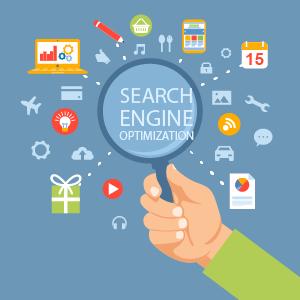
As a major component of online marketing, search engine optimization (SEO) is fairly well-known. If you’re not familiar, SEO refers to a process that will enable your eCommerce platform to appear higher in the search results. If your webpage doesn’t appear in the first fold or at least the first page of search results, the likelihood of getting visitors/leads is remote.
Think about it, when was the last time you went scrolling through subsequent pages of search results? Typically, we choose something from the first or second, with the assumption that those pages are the best. Is that always true? Most of the time, yes.
However, by having an SEO process in place, and with time, you can ensure that your page comes through on the first page of search results. SEO is such an extensive topic that it would warrant an entire article of its own. In lieu of delving into that here, read this to learn more about SEO. Additionally, in search engine optimization, software tools for boost sales and lead generation can also be instrumental in enhancing your strategy.
These tools can help identity potential leads by analyzing search behavior and optimizing your content to increase visibility and engagement.
2. Marketing Automation :
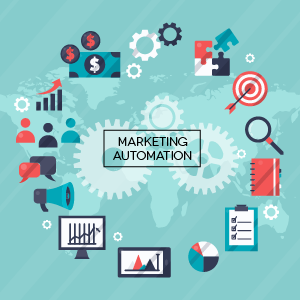
What is marketing automation? Simply put, marketing automation software automates the time-consuming back-end tasks involved in digital marketing. For example, it helps you automate sending marketing emails in bulk that will help you extend the reach of your brand. It will also help with the creation of landing pages with web forms to capture new leads and add them to your marketing list for further marketing.
Marketing automation can also help with placing web pop-ups on your site to offer discounts or capture lead information. It also provides you with insight into leads’ web activity, which emails they open, and so on, which equips you with key information to drive more personalized marketing outreach (see below for more information on personalization).
There are many marketing automation tools out there. However, we use our own tool, Agile CRM, for the simple reason that it is very effective in creating marketing automation in addition to being a full CRM with sales enablement and customer support features… for free.
3. Personalization :
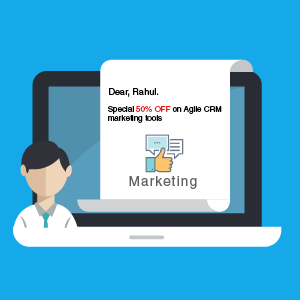
This is a big one. What we mean by personalization is gathering information about leads and their interests, then marketing to them by showing them things that you think they will be interested in. Everyone does not want the same things, so sending everyone the same emails and displaying the same offers to everyone on your eCommerce site will fall short of your goals. With a good marketing automation solution, you gather information about leads’ likes, dislikes, interests and past buying behaviors, to name a few. You can then use this information to personalize your outreach to them. If they have browsed for new shoes on your clothing site, send them emails about a sale you’re having on shoes. If they have purchased t-shirts in the past, configure your marketing automation system to display pop-ups that offer them discounts on t-shirts. Marketing automation software makes this easy, by letting you assign tags to leads based on their behavior, then segment them based on those behavioral tags.
4. Pay-Per-Click Advertising :
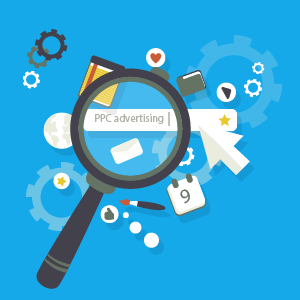 With pay-per-click (PPC) advertising, you pay Google to display your pages at the top of the search results when someone searches for a keyword or keyword phrase that you determine. Once you have your PPC criteria in place and activated on Google, you will only be charged when someone actually clicks on your page—hence the name. Let’s say that you sell vintage cookware on your eCommerce site. You might create a PPC campaign that brings your page to the top of the results when someone searches for “vintage cookware” or “vintage kitchenware.” Yes, you can pay to have your page appear for multiple keywords or phrases. PPC prices work on supply and demand, meaning that the more popular (or common) your keyword is, the more expensive it will be to have your page appear first in the results. On the bright side, if you have a particular niche that’s not saturated with eCommerce sellers, you can run a PPC advertising campaign for a few cents per click.
With pay-per-click (PPC) advertising, you pay Google to display your pages at the top of the search results when someone searches for a keyword or keyword phrase that you determine. Once you have your PPC criteria in place and activated on Google, you will only be charged when someone actually clicks on your page—hence the name. Let’s say that you sell vintage cookware on your eCommerce site. You might create a PPC campaign that brings your page to the top of the results when someone searches for “vintage cookware” or “vintage kitchenware.” Yes, you can pay to have your page appear for multiple keywords or phrases. PPC prices work on supply and demand, meaning that the more popular (or common) your keyword is, the more expensive it will be to have your page appear first in the results. On the bright side, if you have a particular niche that’s not saturated with eCommerce sellers, you can run a PPC advertising campaign for a few cents per click.
5. Inbound Content :

Inbound marketing content is great for lead generation. It is content that is not overtly designed to sell your product, but rather to provide helpful and educational information on a particular topic. You can leverage this content on your blog, via social media, or even in emails to leads. For example, if you sell vintage cookware, per the example above, you might consider writing a blog article on why vintage, cast-iron skillets are in such high demand and expensive. You would want to make a point not to pitch your product too hard in the article, because again, the point here is not to sell your product, but rather to solidify you as an authority on the topic. When leads begin to think of you first when they want answers to questions like that, you will have achieved brand recognition, which is invaluable. When that’s the case, that lead will also automatically think of you when they want to buy something, and in turn come to your eCommerce site first to look for it.
6. Social Media Marketing :

Building your presence on social media is an effective lead generation strategy. Your first step will be to generate followers, which you can do by including links to your social media sites in your emails and purchase confirmations. Simply include the relevant social media icon, along with text that says, “follow us.” As you build a following, you can start to share promotions, discounts, new products and more on social media. If your offers are enticing, your followers may share your posts with their social networks, which extends the reach of your brand. Also, if a friend of your customer sees your post being shared by someone they know and trust, they are much more likely to click on it than if it came to them as unsolicited advertising. You can take it a step further by placing social share buttons in your inbound content in hopes that your followers will share your content further. Social is king these days, so be sure to use it for eCommerce lead generation.
7. Use Web Pop-Ups :

This is another strategy that is supported by marketing automation. Web pop-ups are just what they sound like: small pop-ups that appear when you are on a web page and provide information to you. You can use web pop-ups to display personalized discounts, promotions, limited-time sales, and more. You can also use pop-ups to save leads who are about to leave your website. If someone clicks to close out your page, you can choose to have a pop-up appear that offers them a discount—it may be just the thing that keeps them on your page and results in a new customer. Indeed, you can do a lot for your lead generation efforts with web pop-ups.
8. Continually Build Your Email List :
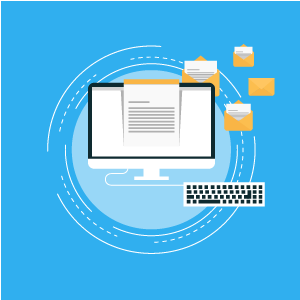 This doesn’t just mean asking people to sign up to your newsletter. In reality, few people will voluntarily sign up for your newsletter unless they are already known contacts in your lead database. A better way to gather new email addresses is to leverage web pop-ups, discussed above. The best way to do this, is to offer an incentive in exchange for someone sharing their email with you. For example, offer them a one-time, 20% discount to your site in exchange for their email address. That’s much more enticing than the prospect of receiving your newsletter—particularly if they don’t know much about you yet. If they take you up on your offer, they will likely buy something, meaning they will remember your eCommerce site in the future, further increasing the chances of recurring revenue from that customer and boosting your lead generation efforts.
This doesn’t just mean asking people to sign up to your newsletter. In reality, few people will voluntarily sign up for your newsletter unless they are already known contacts in your lead database. A better way to gather new email addresses is to leverage web pop-ups, discussed above. The best way to do this, is to offer an incentive in exchange for someone sharing their email with you. For example, offer them a one-time, 20% discount to your site in exchange for their email address. That’s much more enticing than the prospect of receiving your newsletter—particularly if they don’t know much about you yet. If they take you up on your offer, they will likely buy something, meaning they will remember your eCommerce site in the future, further increasing the chances of recurring revenue from that customer and boosting your lead generation efforts.
9. Score Leads :
 Lead scoring is the process of awarding points to leads for taking certain actions, such as visiting high-value web pages on your eCommerce site, or opening and clicking on your marketing emails. The only way you can effectively do this is with a marketing automation solution, because you need the system in place to track all of that activity behind the scenes. Leads don’t see their scores, it is for your benefit only, allowing you to identify and prioritize hot leads. It’s impracticable and virtually impossible to do this manually. Once leads reach a certain threshold, you can consider them qualified leads and change the message you send to them. For example, someone who is showing interest in your site might not need discounts and promotions sent to them—they are more than likely going to buy something anyway. Lead scoring helps you decide what to communicate to who, and is a great strategy for eCommerce sites looking to generate and convert more leads.
Lead scoring is the process of awarding points to leads for taking certain actions, such as visiting high-value web pages on your eCommerce site, or opening and clicking on your marketing emails. The only way you can effectively do this is with a marketing automation solution, because you need the system in place to track all of that activity behind the scenes. Leads don’t see their scores, it is for your benefit only, allowing you to identify and prioritize hot leads. It’s impracticable and virtually impossible to do this manually. Once leads reach a certain threshold, you can consider them qualified leads and change the message you send to them. For example, someone who is showing interest in your site might not need discounts and promotions sent to them—they are more than likely going to buy something anyway. Lead scoring helps you decide what to communicate to who, and is a great strategy for eCommerce sites looking to generate and convert more leads.

6 Comments
Jennifer Fernando
about 6 years agoAwesome post. Thank your for sharing such a nice article.
ReplySaketh Rasakatla
about 6 years agoYou are welcome. :)
ReplyDouglas Mbugua
about 6 years agoThanks for sharing such informative information. Lead generation and SEO marketing are very important and therefore should be accorded maximum attention to ensure the success of any business.
ReplyGabriel Swain
about 6 years agoAgreed and thanks for the positive feedback!
ReplyMaja
about 6 years agoVery informative post!! Nowadays, there are better options than spending a lot of time and buying lists online! Instead, you can use leads as a service platform, this will give you better results for sure!
ReplyGabriel Swain
about 6 years agoThanks for the positive comment and for sharing your feedback!
Reply